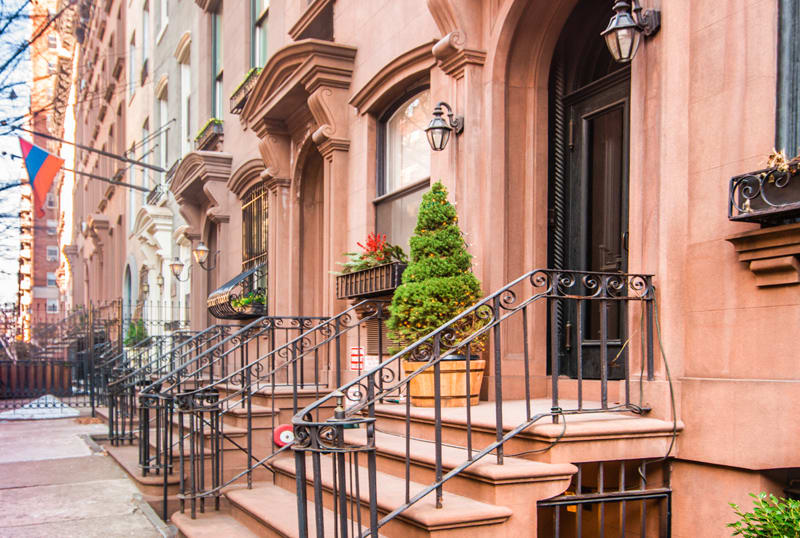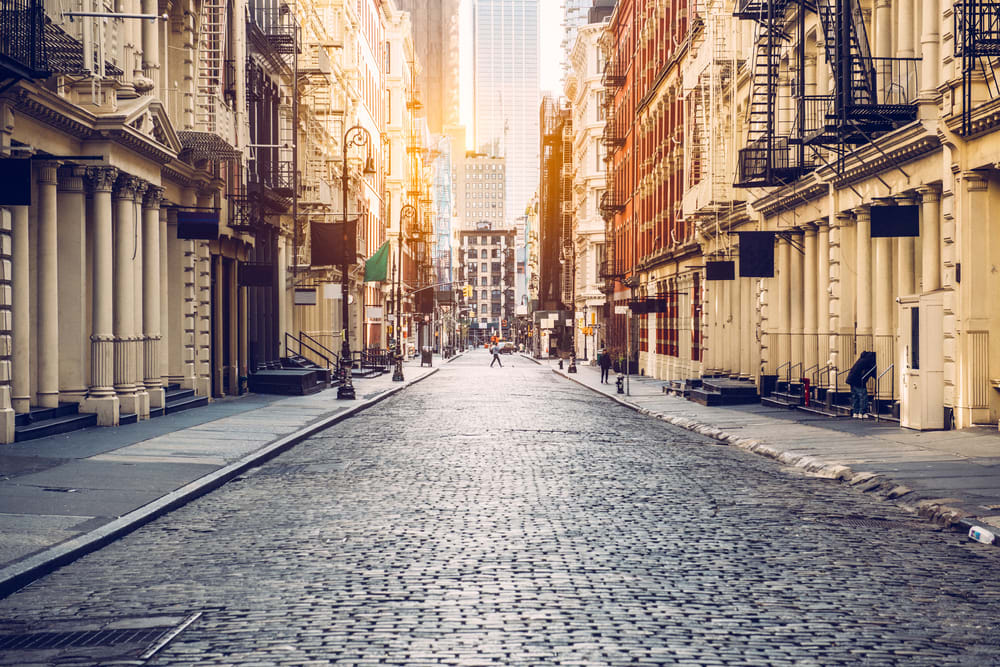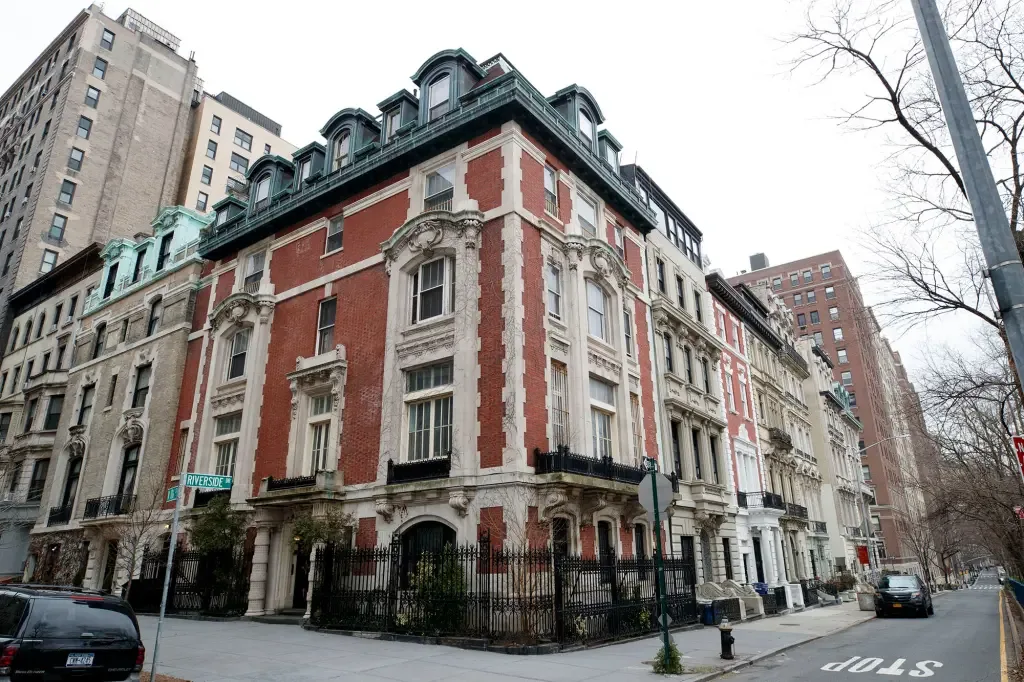
Lower East Side
Young Professionals
Speakeasies
The Lower East Side has blown up in recent years as it transitioned from an immigrant, working-class neighborhood to a popular spot for young professionals and students. The neighborhood used to be filled with “Bargain District” stores that are now swept away in favor of trendy boutiques and restaurants along tree-lined streets like Clinton. There are so many “speakeasies” in this neighborhood you’d think prohibition was still going on. With all the nightlife here, there are more tourists and young people around, but if you’re looking to find a great meal at any time of night, this is the place.
Since this neighborhood was one of the first to be developed in the city, the streets are narrower, and the buildings are packed together, with a mix of older walk-up apartments newer condo buildings, and emerging high-rise luxury towers. Compared to the East Village, this neighborhood may be a bit more grungy, but it’s also more affordable and has more subway stops. This neighborhood can be more chaotic, but it's full of history, and it's within walking distance to Chinatown, Alphabet City, and even Williamsburg if you’re near the bridge.
- Saigon Social
- Banzarbar
- Pig & Khao

Murray Hill
DINKs/SINKs
Curry Hill
If you want to stay in Manhattan but avoid the crush of the hot areas like The Village, SoHo, or the Lower East Side, Murray Hill is a good neighborhood to check out. Although it gets some smack talk on the internet, there are plenty of quieter bars and restaurants, and less expensive condo options make it a great first-purchase choice for singles and couples. Murray Hill has a reputation for having lots of great Indian restaurants, so much so that it got the nickname Curry Hill. Although there aren’t that many subway stops in this neighborhood, it is very close to Grand Central. Despite a reputation for being full of frat bros, this neighborhood is diverse when it comes to both race and age demographics. Generally, if the building was built after the 1980s, there will be more families. Still, maybe stay inside during Santa Con.
- The Morgan Library and Museum
- Ahimsa

Chelsea
LGBTQ+
Queens and Scenes
The Village used to be the center of LGBTQ+ lifestyle in NYC, but skyrocketing real estate prices shifted much of the population to neighborhoods like Chelsea. Chelsea has the largest number of same-sex couples in all of New York and it has a number of gay-friendly businesses along Eighth Avenue as well as a jumping nightlife scene with tons of gay bars and comedy clubs featuring LGBT comedians to keep the community entertained. West of 8th Ave, the neighborhood quiets down and becomes more residential. It’s close to everything– Flatiron, Midtown, West Village, etc., and it has the High Line, Chelsea Park, and several art notable galleries. Transit is easy in Chelsea with tons of different subway lines and bike paths.
- Beer Run
- REBAR Chelsea
- Barracuda Bar

Upper East Side
Families
XOXO, LookyLoo
Manhattan is notoriously tricky for families, for the most part due to the insane costs, but also because of the small apartments/condos and the feeling that your kiddos aren’t getting much of an outdoor lifestyle amidst the madness. If however, you’re ready to ignore all that and make it happen here then you’re probably going to look at the Upper East Side as an option. It’s the notoriously fancy home to the Gossip Girl characters and is the most historically wealthy neighborhood in NYC. Single-family homes still exist for sale along these tree-lined blocks but for 99.999999% of the population, these will be unaffordable. Apartment buildings, condo buildings and homes divided into flats are more affordable alternatives and the Upper East Side is filled with them. It’s also home to many of the best and fanciest private schools if you don’t want your precious little ones to go to PS101. There are magnet public schools both within the neighborhood and throughout the city so there are ways to get the best of both worlds here. Manhattan has the most museums and art galleries per square foot of anywhere else in the world, and a significant number of them are on the Upper East Side. It’s not necessarily the trendiest spot when it comes to bars and restaurants, but as a large neighborhood, there are still be plenty of spots for fine dining.
- Meredith Rosen Gallery
- Museum Mile
- Sushi Noz

Upper West Side
Families/DINKs/SINKs
It's for Living
The Upper West Side is one of the larger neighborhoods in Manhattan, bordering the length of Central Park (59th St-110th St) and the Hudson River. It used to be called the “Bloomingdale District,” not from the department store on 59th and Lexington, but from the Dutch settlers who previously occupied the area, and there are still touches of Dutch colonialism in the street names and villages. This area is considered post-gentrified, though it still remains somewhat diverse. Although it hasn’t quite been a gayborhood since the AIDS epidemic, there are still a few queer-friendly hang-out spots in the area.
With a higher rate of college-educated inhabitants than the rest of the rest, most residents here really value something called “quality of life.” Despite being a larger neighborhood, there’s a real sense of community, especially on Halloween. There’s plenty to do if you want to feel cultured, from the American Museum of Natural History to the Folk Art Museum, to Lincoln Center. If you’re outdoorsy but still love to live comfortably in the city, then Equinox and Arc’teryx are conveniently located across from a Sweet Green on Columbus Ave. Another upside of the Upper West Side is that fewer tourists are on this side of the Park, without pesky Fifth Avenue traffic to worry about. It has less nightlife than downtown or the Lower East Side, but going out for the night is still easily accessible with the subway (as easy as the 1 line, the 2 line, or the 3 line), or you can explore the bars along Amsterdam Ave.
- Bombay Frankie Roti Roll
- Bánh Vietnamese Shop House
- Malecon

FiDi
Young Professionals/Young Families/DINKs/SINKs
**Welcome back to the Gilded Age **
FiDi has gorgeous Gilded Age and Art Deco architecture, massive high rises, and Wall Street. The neighborhood has changed a lot since the 1970s, with increasing development for residential use bringing more and more young to middle-aged professionals. Development accelerated after 9/11, with the building of more museums, memorials, and the One World Trade Center.
More restaurants keep popping up every day, and there are some surprisingly affordable dive bars in the area too. Since FiDi borders Battery Park, there are also plenty of waterfront dining options. Although there’s no longer the “deathlike stillness that settles on the district after 5:30 and all day Saturday and Sunday," to quote urbanist Jane Jacobs, the tourists and 9-5 workers tend to clear out after Happy Hour. You’ll find yourself in one of the safer places to be at night, free to wander the winding streets and admire the beautiful architecture in peace. Luckily you’re close to Tribeca, SoHo, and LES if you want some more extensive nightlife. Some people don’t love the finance worker type, but if you are a finance-worker type or just someone who loves a quiet weekend on the water, this might be the place for you.
- Federal Hall
- The Woolworth Building
- El Vez and Burrito Bar

SoHo
DINKs/SINKs
Used to be an Artist Neighborhood
Originally the first free black settlement of Manhattan, given to people formerly enslaved by the Dutch East India Trading Company, SoHo embodies the idea that the city never stops changing. From farmland to commercial buildings and theaters to brothels, to manufacturing, SoHo hasn’t been pinned down for more than a couple of decades. In the 1960-70’s the open lofts designed for industrial use welcomed in the artists who would skirt the city’s zoning laws and build the neighborhood’s new reputation as a hub for culture and expression. There are still galleries, but as real estate prices soared and commercialization of the neighborhood increased, the artists moved to Chelsea and the East Village.
Did SoHo sell out? Only if you see it in the scope of the last couple of decades. In some ways, it has returned to its pre-Civil War commercial appeal. It has, however, become less diverse. The neighborhood holds onto its gorgeous 19th-century architecture and cobblestone streets, but proposals for new, more affordable developments are controversial since they would lack the appearance of bohemian historicity. As some put it, SoHo is “busy, crowded, touristy, expensive, has a lot of shops, and restaurants,” although some younger people live here, it’s mostly inhabited by older folks, some (but very few) who have even held out since the days it truly was an artists’ neighborhood. For slightly less expensive alternatives, see East Village, Lower East Side, Kips Bay, and Murray Hill. That being said, if you can afford a place in SoHo, why wouldn’t you go for it? It’s beautiful, historic, and fun.
- Fanelli Café
- Artists and Fleas SoHo
- 73 Worth Street

Greenwich Village
Families/LGBTQ+/DINKs/SINKs
So the West Village is part of Greenwich Village, but the East Village is not. Just to make that clear.
Greenwich Village spans from Broadway on its eastern border, to the North River (part of the Hudson River) on the west, and from 14th St down to Houston St. Much like SoHo, Greenwich Village used to be the place to celebrate a more bohemian or alternative lifestyle. It’s also where the historic Stonewall Inn is located, and still, a few other gay bars to boot, especially in the West Village. With NYU nearby, there are more students around, and housing costs tend to veer more student-friendly (not too friendly though) the further you get from the rivers. The West Village is wonderful for dog-walking, especially along the Hudson River Greenway, and there are fewer tourists than in Central Village and Meatpacking. Washington Square Park is a great location for people watching, and for culture, you can visit the Whitney Museum, the exterior of Carrie Bradshaw’s apartment building, or any of the other historic sites that were once home to the Beat Generation, queer liberation movements, or artist residencies.
Historic preservationists are fighting with developers and NYU to preserve the historical and architectural integrity of Greenwich Village while mourning the high cost of living that has pushed out many of the artists. Still, the area remains mostly Queer-friendly and liberal today. The public schools are better than average for the city, and the Village is considered more family-friendly than the East Village.
- Pier 45
- Stonewall Inn
- 75 ½ Bedford St

Riverside
Families
Windy Walking
Within the Upper West Side, Riverside offers a scenic drive and a great park for dog walking. Much of what is written about UWS applies here, but living near Riverside offers a more concentrated sense of luxury and isolation. If it’s easy access to public transit you’re after, it’s generally recommended to live above 60th St. But, if you want more space or in-building accommodations, living along Riverside Park might be it.
Riverside Drive is lined with well-known apartment buildings like the Normandy and the Master Apartments, and other townhouses from 72nd to 118th Streets. Former famous residents include George Gershwin, J. Robert Oppenheimer, and Babe Ruth. Some of the buildings near the park were once owned by Trump, but his name has since been taken off. They do offer decent living space and luxury amenities like a grocery store on the bottom floor. The distance to the subway isn’t worth it for some, but others love the view of the Hudson from the high rises. Proximity to the river can make walking to the subway a chillier, windier experience in the winter, and there are some mixed reviews on the homelessness situation in the lower part of the Upper West Side.
- 194 Riverside Drive
- General Grant National Memorial
- The Colosseum at 435 Riverside Drive

Harlem
Families/DINKs/SINKs
The Neighborhood
Harlem is a huge neighborhood that spans from the Harlem River and 155th Street in the north, to Central Park in the south. It was originally a Dutch Village, but the area has cycled through periods of economic growth and decline, with population demographics changing with each shift. In the 19th century, Harlem was primarily the home of Jewish and Italian immigrants. Then in the early 20th century, African Americans moved to Harlem and brought about the Harlem Renaissance; an outpouring of cultural, artistic, literary, and political thought.
Technically, only Central Harlem is part of Harlem, whereas West Harlem (Manhattanville and Hamilton Heights) and East Harlem (aka Spanish Harlem, or El Barrio) are considered part of Greater Harlem, but not Harlem proper. It’s not confusing at all. But, since most residents talk about West and East Harlem when talking about Harlem, we will too.
East Harlem is diverse, more working class, and has one of the highest populations of Puerto Rican Americans in all of NYC. El Museo del Barrio showcases the vibrancy of art, history, and culture of this neighborhood. There’s more public housing and fewer grocery stores.
Hamilton Heights is home to City College of New York, and the Hamilton Heights Historic District. Manhattanville reaches all the way to the Hudson River and is the site for a planned major expansion of Columbia University. Central Harlem holds the Apollo Theater, which has been around since the Harlem Renaissance, and a generally strong religious presence, with various Christian denominations, represented. Islam and Judaism also maintain a presence. Residents appreciate the proximity to Target, East River Plaza, and the northernmost (and often overlooked) part of Central Park.
Harlem is a huge area with lots of diversity. There are families, but also plenty of recent graduates. Some areas, like around 2nd Ave tend to be more desolate at night, while areas closer to 116th have more people around at all times, and open delis/ bodegas, and Mexican restaurants. Off 125th is a vibrant, welcoming place with great restaurants, but can be rowdy at night. West Harlem is considered generally safer and more residential than East Harlem. Some blocks are mixes of newer condos and old-school apartment buildings, and many neighborhoods that were historically Black and Puerto Rican have seen changes as more students and white people have moved in seeking lower housing costs, leading to an occasional vibe of tension between newer and older residents.
The frequency of petty crimes and neighborhood vibes change from street to street, with some areas being more gentrified than others. Locals really appreciate the ability to get to Midtown in ten minutes, the more family-oriented areas of the neighborhood, and the access to various green areas. Having common sense makes a difference in this neighborhood, and so does getting to know your neighbors and patronizing your local businesses. Generally, when asking people about Harlem, the people who have actually lived there have better things to say about it than those who haven’t. Take from that what you will.
- The Apollo Theater
- The Hamilton Grange
- The National Jazz Museum in Harlem